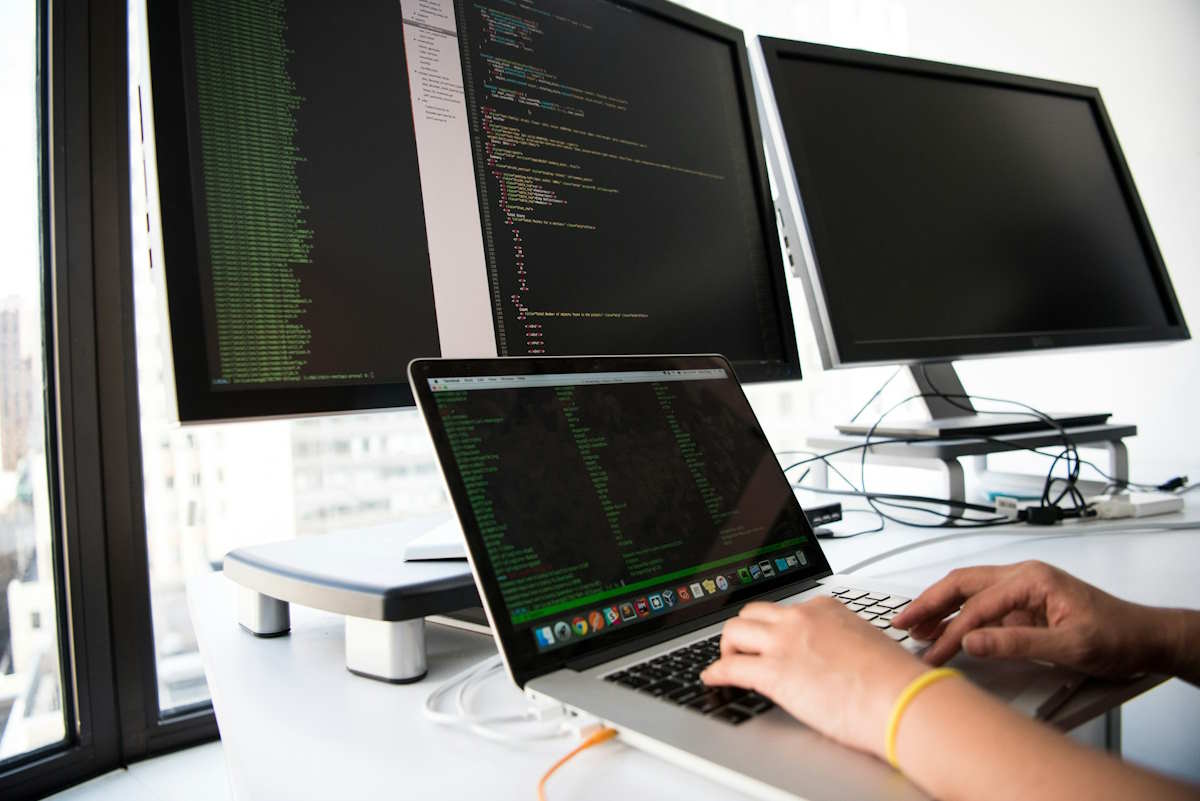Over the past few years, e-commerce technology has grown exponentially, especially after the pandemic. And why wouldn’t it? The advanced automation and unified data have greatly improved the overall online shopping experience for customers and merchants alike.
However, as cloud computing becomes increasingly essential for businesses, the demand for accurate, private, and consistent data is also higher than ever. One technical error or data corruption and you can say goodbye to your sales growth or customer goodwill.
So, how can you secure and sync data properly to streamline and safeguard your online business?
Let’s dive into this article and find out.

What is Data Synchronization?
Data synchronization is the process of ensuring that data across different systems is consistent and up-to-date. It is basically an ongoing process of consolidating new and historic data while maintaining consistency.
Whether we realize it or not, we rely on data synchronization every day.
Notice how the emails/ outlook on your iPhone and Mac devices show the same? That’s data synchronization.
For e-commerce businesses, this means synchronizing information (such as inventory levels, customer orders, payment details, product updates) and keeping them consistent across various platforms, applications, and devices.
The benefits of such data synchronization include:
- Real-time sync between sales and marketing.
- Resolves duplication.
- Improve customer experience.
- Consistency across all platforms.
- Better cross-functional automation.
Since data synchronization involves transferring sensitive data, securing those data transfers has also become an important part of data syncing. That brings us to our next topic.
Key Challenges in Securing Data Synchronization for E-Commerce Businesses
As e-commerce evolved, so did the complexities and challenges in secure data synchronization. These challenges encompass not only collecting and harnessing user data but also safeguarding them against the ever-increasing cyber threat.
From managing vast amounts of sensitive data to syncing transactions, let’s see all the key challenges that you might face in securing data synchronization:
1. Cyber Security
Synchronizing sensitive data like customer payment information, shipping addresses, and inventory data poses a significant security risk. Such an issue exists because the information needs to be synced across different systems.
Cybercriminals can easily intercept and exploit this data during synchronization if security measures are not robust.
If God forbid, a large-scale data breach happens, it can severely damage consumer trust and have an adverse impact on your business.
The Casio server breach, which hit their customers in 149 countries, is the biggest example of such security threats. It really shows how even giant tech companies like Casio aren’t safe from cyber-attacks either. (Source: The Register)
And that’s not all!
Since 2021, cyber-attacks in the e-commerce market have increased around 30%. (Source: Forbes)
And let’s not forget the additional costs associated with eliminating the consequences of cyberattacks.
2. Cross-Border Transaction and Regulation
If your e-commerce business is operating internationally, you might face a different kind of issue. The differences in regulatory requirements for data security can complicate synchronization across different regions.
Take the EU for example.
Some European countries impose hefty fines on e-commerce companies that don’t have any robust data protection solutions in place.
On the other hand, some countries, like Russia and China, require certain types of data to be stored locally within their borders. That can severely limit and complicate your data synchronization efforts.
And the issue doesn’t end there!
Off-shore transactions from customers in other regions can create data discrepancies. I’m not just talking about the currency variation, I’m also talking about harvesting different regional transaction/banking data for a successful purchase.
Syncing these data between bank accounts and your accounting software poses a challenge. If the customer data in your CRM(customer relationship management) system doesn’t match with other programs, it can lead to data loss.
And any kind of data loss can hamper the data-driven decisions of your business. This can even lead to legal troubles if your logged transactions don’t match the actual sales data.
3. Data Volume and Complexity
Any e-commerce business with good traffic has tens and thousands of prospects and customers. Each of them leaves behind crucial digital data that needs to be synchronized across various platforms and internal systems.
However, collecting and consolidating data from dozens if not hundreds of different sources is no easy task.
Any of the following issues can arise during this transfer of data:
- Data loss.
- Data corruption.
- Error or glitch in the system.
- Uninformed business decisions.
- In-actionable data scattered across various platforms.
Furthermore, large datasets increase the overall complexity of the system. If the new data are not synced in real-time throughout its lifecycle, it can lead to delayed authorization or inaccurate data.
How to Streamline Your E-Commerce Business with Secure Data Sync
The digital market is an ever-evolving frontier. And as the market is evolving, so are the strategies and technologies for securing data synchronization.
Some say the Blockchain and AI are the future of secure data sync, while others emphasize polishing the existing security measures.
I say, why not both?
If you want to excel in the e-commerce market and streamline your online storefront, you need to follow the best measures and key trends that will shape the future of secure data synchronization.
Here’s how:
1. Implement a Robust Data Governance
Data governance refers to the policies, standards, and processes that define how an organization manages its data throughout its lifecycle. It also ensures that the organization complies with relevant laws and regulations.
That’s why it plays a vital role in synchronizing data for e-commerce platforms.
Protecting sensitive data? Check.
Reducing data inconsistencies? Check.
Enhancing trust with the customers? Double check.
To properly implement a governance framework, you can:
- Define Data Ownership and Responsibilities: Establish clear roles and accountability among those who manage, secure, and oversee data. By doing so, you can ensure that data synchronization processes are well-managed and secure.
- Develop Data Security Policies: Mask sensitive data to protect privacy while syncing across various platforms. Additionally, keep the data encryption and access controls up-to-date to address new security threats.
- Adopt Data Lifecycle Management: Implement secure data archiving and disposal processes so that data duplication or overlapping with old data never happens.
- Ensure Regulatory Compliance: Make sure your e-commerce business complies with GDPR (EU), CCPA (California), PCI DSS (Payment Card Industry Data Security Standard), and other regulatory bodies to avoid any legal trouble.
2. Add Encryption and Secure Protocols
Pretty much every e-commerce hosting platform these days is highly customizable and capable of handling complex operations. Such as data synchronization across multiple systems, stores, and regions.
For example, the security features in Magento allow users to enable HTTPS and SSL/TLS Certificates. It ensures that all data transmitted between clients, servers, and external systems has end-to-end encryption.
As a result, it pretty much handles the “secure” part of data synchronization.
Additionally, configure your e-commerce hosting server to use Secure File Transfer Protocols (SFTP/FTPS) for end-to-end data transfers.
While you’re at it, consider using OAuth or token-based authentication for secure API access. This adds an extra layer of security by ensuring that only authorized systems can access the data during synchronization.
Pro tip: Don’t store any customer credit card data on your server. Always use payment gateways that are widely trusted and use tokenized or encrypted payment data. That way, your customers’ sensitive data will be protected in case your server gets breached. If you are worried about Magento store security, explore Fullmage’s magento security services to find your needs.

3. Use Blockchain
When people hear the word “blockchain”, they immediately think about cryptocurrency or NFTs.
However, it has found its application beyond those facets due to its decentralized, tamper-resistant nature. Basically, it stores data across a vast array of computers, each block in the data chain linked with a cryptographic hash of the previous block.
As a result, it becomes impossible for one entity to tamper or alter data once recorded in a blockchain.
By using such a cryptographic mechanism, e-commerce businesses can maintain transparent and securely synchronized datasets across all systems. It makes data breaches and fraudulent incidents nearly impossible.
4. Artificial Intelligence and Machine Learning
Data security across the industry is taking a new turn with the use of artificial intelligence(AI) and machine learning(ML).
These advanced algorithms can excel where the normal human mind can’t; analyzing tons of datasets in real-time and finding anomalies that usually go unnoticed. By identifying these patterns, AI can also predict potential security threats.
And that’s not all!
Machine learning can also help e-commerce businesses optimize synchronization workflows. It learns from past data and predicts the best times for synchronization to reduce latency and errors.
You can integrate AI platforms such as Microsoft Azure AI, Google AI, or Amazon Web Services (AWS) AI with your e-commerce hosting platform to enable automated data synchronization. These platforms also provide APIs and tools for subsequent tasks in data syncing.
Final Thoughts
Secure data synchronization is a big deal for any e-commerce business as it can literally define how well your online storefront performs. From using blockchain or AI to having robust encryption, businesses must stay ahead of the curve by adopting these advanced solutions.
If you want to boost your e-commerce business as well, use the above-listed methods to ensure seamless, secure, and efficient data synchronization across all platforms.
Anyway, that’s it for today. Have a nice day!

















